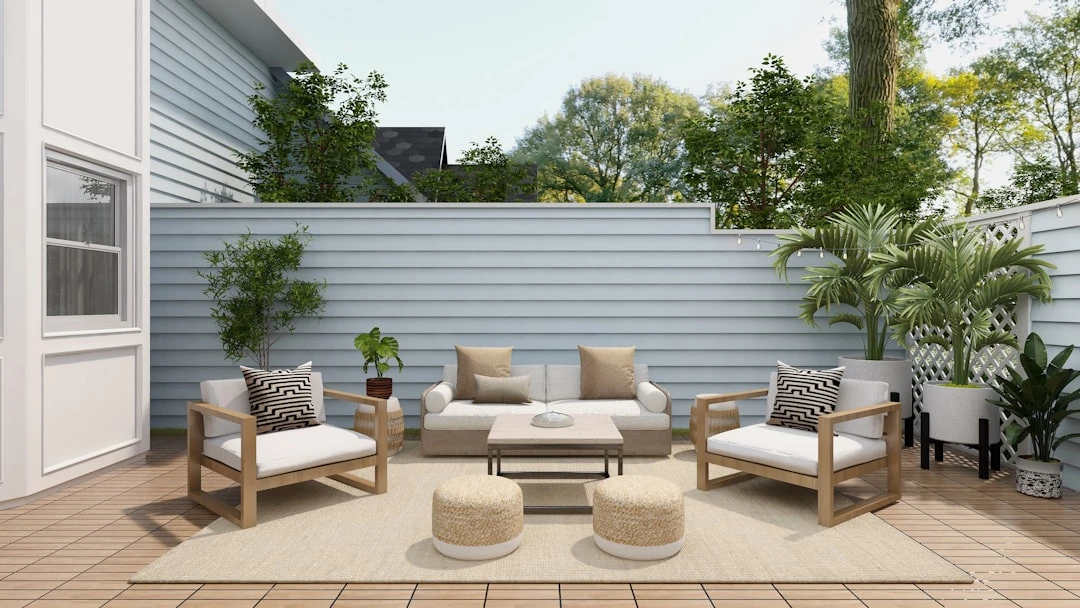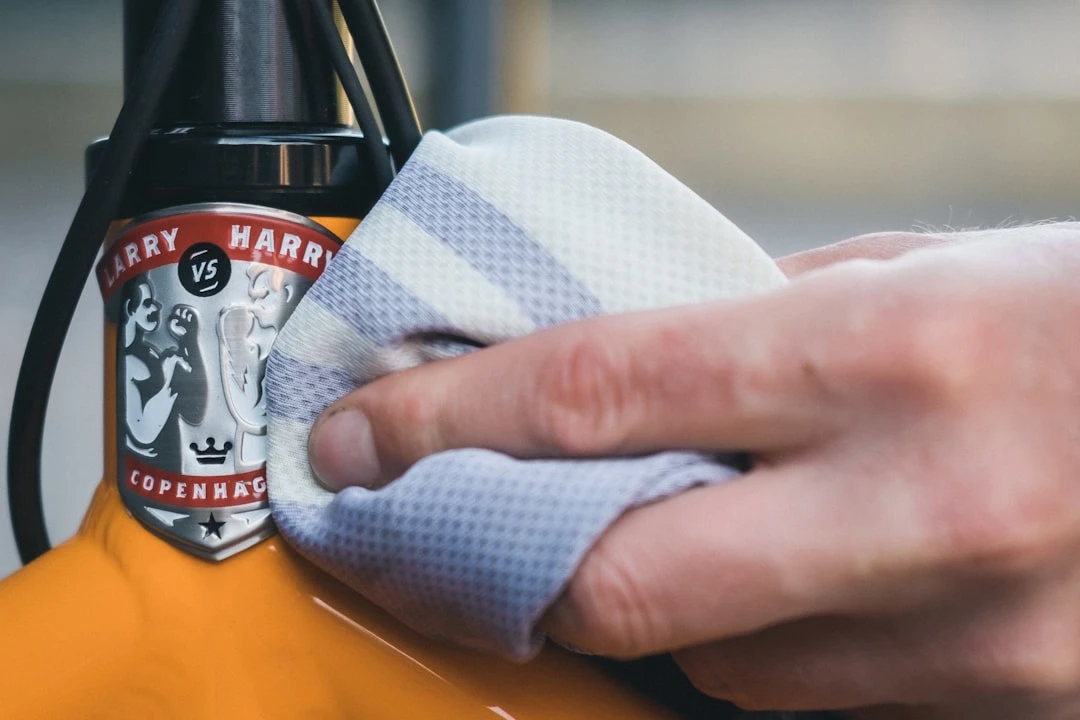Garden Furniture Care: Practical Tips from Spring to Fall

Have you just purchased new terrace furniture or want to extend the life of your existing garden furniture? Furniture used in outdoor conditions requires special attention to withstand Estonia's changeable weather conditions. Let's take a closer look at how to properly maintain different materials and how to protect your outdoor space throughout the entire season.

Maintenance tips for different materials
Wooden garden furniture – preserving natural beauty
Wooden furniture is a timeless classic that adds natural warmth to your terrace or garden. However, to ensure longevity, wood requires regular maintenance:
Regular oiling – annual oiling protects wood from sun, rain, and mold. Untreated wood turns gray, cracks, and can start to rot. As Tikkurila's instruction guide emphasizes, oiling is the primary protection method for outdoor wood.
Choosing the right product – use weather-resistant wood oils that make surfaces water and dirt repellent. Pinotex Terrace & Wood Oil is an excellent choice that protects wood effectively and preserves its natural beauty.
Importance of preparation – before oiling, clean wood surfaces thoroughly, remove loose dirt and sand worn areas if needed. Also check the condition of the wood – decayed or cracked boards should be replaced to prevent further damage.
UV protection – for long-term protection, choose oils with UV filters, such as Pinotex Solar Terrace & Wood Oil, which can extend maintenance intervals up to three years thanks to effective UV protection.
Metal garden furniture – durability and elegance
Metal furniture can be both a practical and stylish choice, but also requires conscious maintenance:
Material type – the most durable is stainless steel, which requires minimal maintenance, but is often more expensive. Aluminum is lightweight and also quite low-maintenance, making it a popular choice for terrace furniture.
Cleaning – metal furniture can be cleaned with a damp cloth and mild detergent. Avoid abrasive cleaners that can damage the surface and reduce the metal's durability.
Rust prevention – if you notice beginning rust, clean the spot quickly and coat with an anti-corrosion product. Regular iron or steel furniture may require special protective paint, which should be renewed as soon as you notice paint peeling.
Plastic garden furniture – affordable and practical
Plastic furniture is popular for its affordable price and easy maintenance, as confirmed by K-rauta's garden furniture section:
Easy cleaning – usually it's enough to wipe with a cloth and wash with soapy water. Plastic doesn't absorb dirt into itself, which is why it's significantly easier to maintain than other materials.
Avoiding sun damage – plastic furniture can start to fade or become brittle with prolonged sun exposure. If possible, keep furniture partially shaded or use protective covers, especially during periods of intense sun.
Refreshing – faded plastic furniture can sometimes be refreshed with special plastic restorers that restore color and protect the surface. This is an affordable alternative to purchasing new furniture.
Upholstered furniture – comfort and freshness
Cushions, seat covers, and other textiles make outdoor furniture more comfortable, but require special attention:
Regular cleaning – remove dust and dirt with simple brushing, remove heavier stains according to the material's care instructions. Polyester textiles are usually more durable and easier to clean.
Importance of impregnation – use water and dirt repellent impregnation products that extend textile life and keep them clean longer. Impregnation should be repeated at least once during the season.
Drying – after rain or washing, let textiles dry properly to prevent mold growth. Dry in shade to prevent colors from fading and textile structure from being damaged by UV radiation.
Seasonal maintenance – year-round beauty
Spring awakening
When the snow has melted and temperatures warm up, it's time to wake your garden furniture from its winter sleep:

Thorough inspection – check wood for cracking, metal for rusting, or plastic for damage. Replace or repair damaged parts. A spring inspection helps prevent problems from worsening during the season.
Cleaning – remove dirt, leaves, and other debris accumulated during winter. For wooden furniture, use a soft brush or pressure washer on low setting to avoid damaging the wood.
Updating protective layer – apply a fresh coat of oil to wood, and if needed, add corrosion protection to metal parts. Pinotex recommends using special terrace and furniture oils that provide long-term protection against weather effects.
Summer maintenance
During the active use period, furniture should be maintained regularly:
Quick cleaning – remove food stains, bird droppings, and other dirt as soon as they appear. Quick action helps prevent permanent stains, especially on wood and textiles.
Airing textiles – let seat cushions and other textiles dry properly from time to time, especially after summer rain. Regular airing helps prevent unpleasant odors and mold growth.
Checking components – regularly check the condition of screws and joints, tighten or oil them if needed. For metal furniture, check connections for beginning rust so you can catch it early.
Autumn preparation for winter
As temperatures cool down, it's time to start thinking about winter storage:
Thorough cleaning – before putting furniture to bed for winter, clean all surfaces thoroughly. Use wood cleaner for wooden furniture and appropriate cleaners for other materials.
Additional protective layer – if needed, apply an extra coat of oil to wood for winter. Tikkurila's instruction guide recommends using special weather-resistant oils to protect wood from moisture and cold.
Storage – ideally, move furniture to a dry and cool place (shed, basement, garage). If this isn't possible, cover furniture with durable weather-resistant covers. This is especially important for wooden furniture, which K-rauta specialists recommend storing in a warm and dry room for winter.
Ensuring long-term durability
Preventive measures
Position furniture strategically – by avoiding direct sunlight and rain where possible, you can significantly extend furniture life. Wood is especially sensitive and can be damaged quickly by excessive moisture and sun exposure.
Use covers – invest in quality covers that protect furniture when not in use. Covers should be made of breathable material to prevent moisture buildup under furniture.
Avoid contact with chemicals – fertilizers, soils, and other garden chemicals can damage furniture surfaces. Be careful using these near furniture and clean any contact areas immediately.
Budget-friendly solutions
You don't always have to spend large sums to protect garden furniture:
Homemade protective products – for simpler wood surfaces, you can also mix protective products from natural oils. For example, a mixture of linseed oil and turpentine is a traditional way to protect wood, though it doesn't offer the same effective protection as special products.
Regular maintenance – it's often cheaper and easier to maintain furniture regularly than to replace worn or damaged furniture later. Even simple cleaning and drying after rain can significantly extend furniture life.
Seasonal covering – if you can't move furniture indoors for winter, at least invest in quality covers. Well-fitting covers protect furniture from rain, snow, and sun, significantly extending its life.
Kinnisvara24 recommendations for homeowners with gardens
If you're planning to buy a new home with a terrace or garden, it's worth being aware of the special features of outdoor space maintenance. The condition of balconies in apartments for sale or terraces in houses for sale can give you an idea of the previous owner's maintenance habits and hints of potential problems.
If you're looking for new developments in Tallinn, pay attention to terrace materials – quality materials require less maintenance and have a longer lifespan. With new developments, it's worth finding out what materials have been used for terraces and balconies and what maintenance guidelines the developer provides.
If you're instead looking for a rental apartment, be sure to find out whether balcony furniture is included with the rental and who is responsible for its maintenance. The rental agreement should clearly state what are the tenant's obligations for maintaining outdoor furniture.
If you're planning to buy real estate abroad, take into account the local climate conditions and their impact on garden furniture. In warmer climate zones, wood lifespan can be shorter due to intense sun exposure, while in humid regions it's important to choose mold-resistant materials.
Summary
Long-lasting garden furniture is not a matter of chance, but the result of conscious maintenance. By using the right materials and maintenance products and performing regular maintenance work, you can enjoy your garden and terrace furniture for years. In our climate conditions, it's especially important to follow a seasonal maintenance schedule and protect furniture during winter.
Before your next purchase, whether real estate abroad or a domestic house from a private owner, think about how you can design an outdoor space that is both beautiful and practical. You can always get professional advice from experienced real estate brokers who understand the special features of different regions and can recommend solutions tailored to your needs.
Search
Keywords
Most read articles
- Price per Square Meter of Apartments in Tallinn in 2025

- Estonian Apartment Prices and Market Expectations in 2025

- The Apartment Market in Estonia's Largest Cities in 2025

- Notary Fee and State Fee – Who Pays and How Much?

- Five-year transition period ended: nearly zero-energy building requirements extended to new small residential buildings
